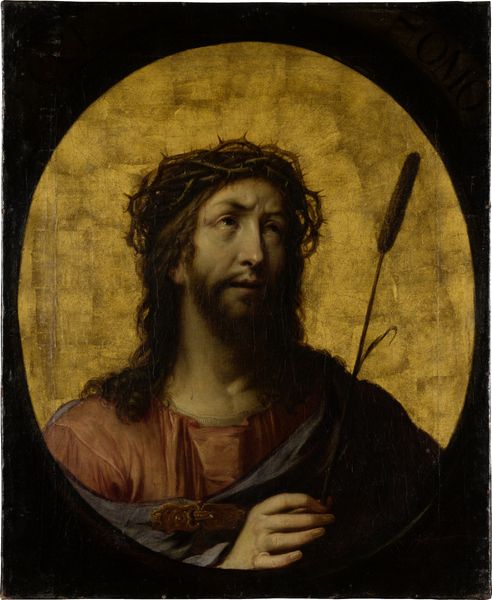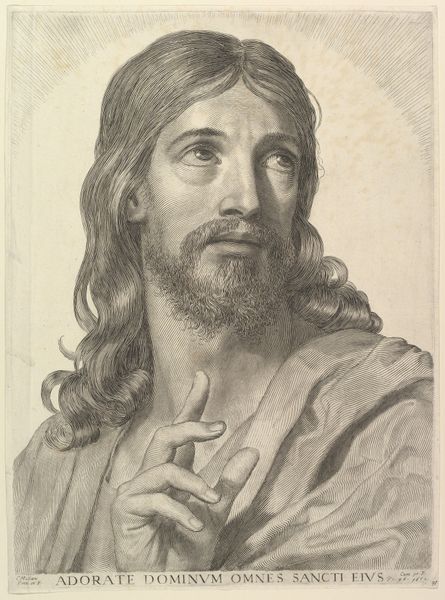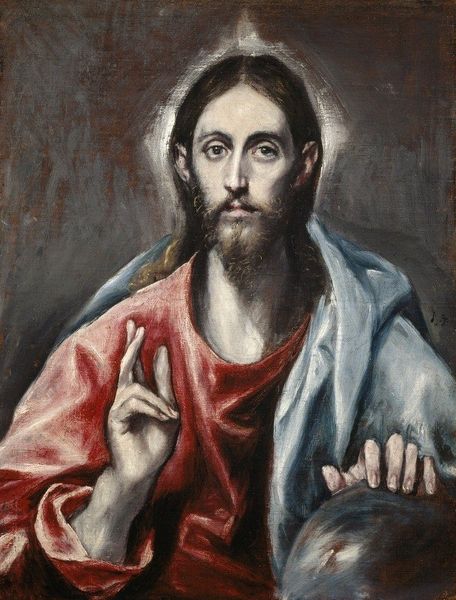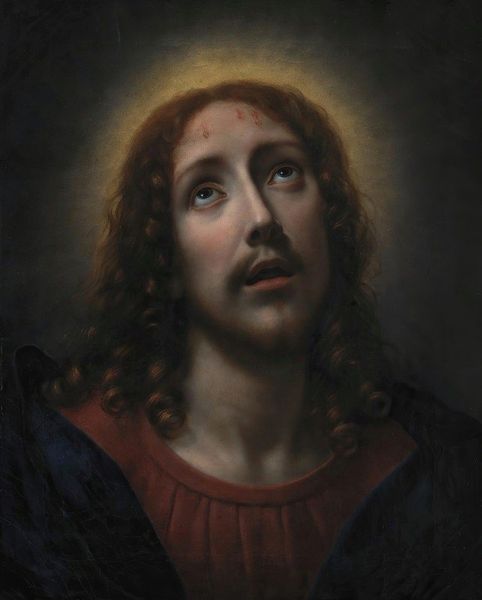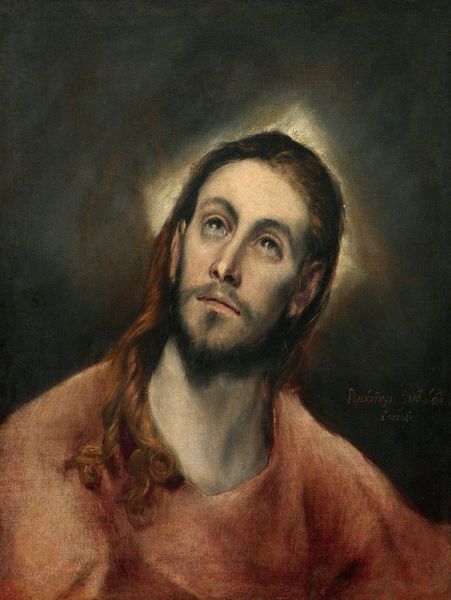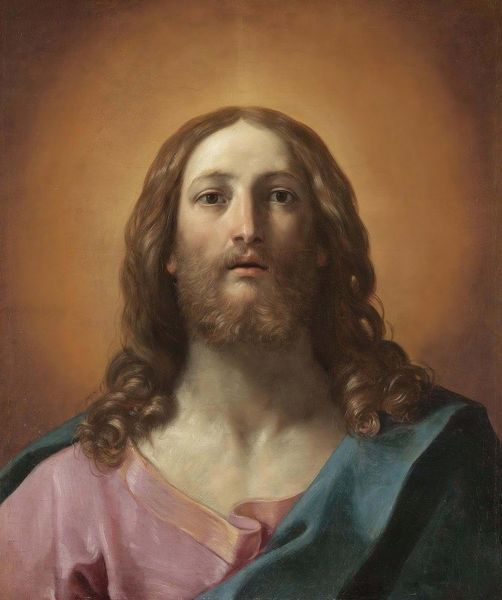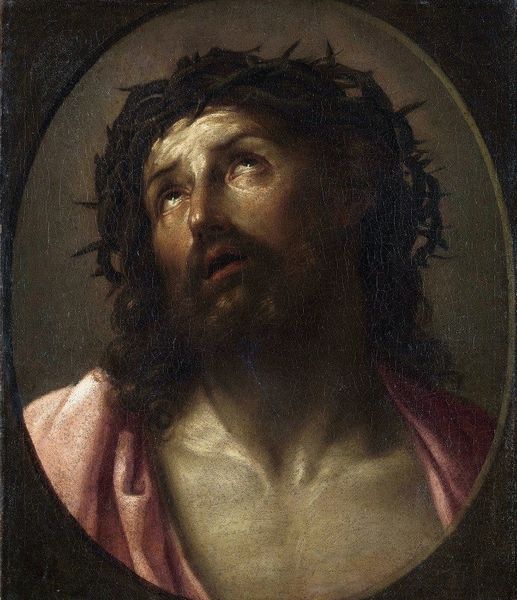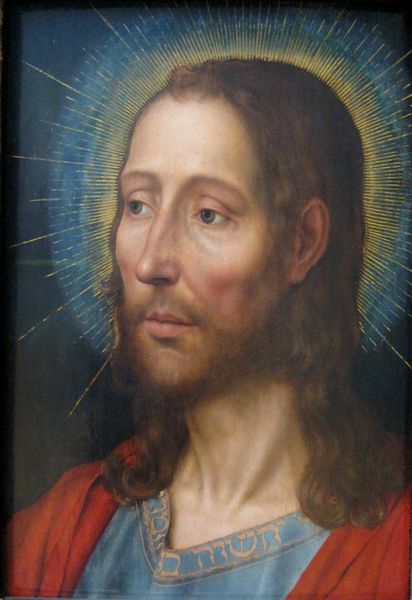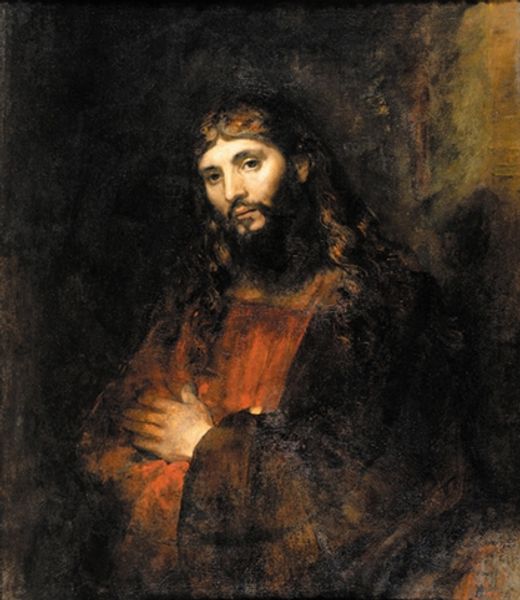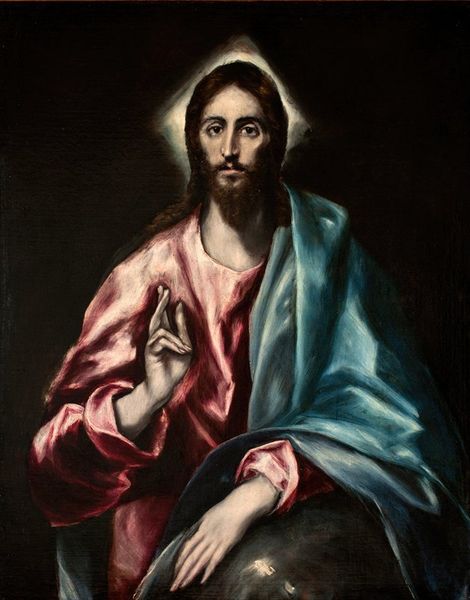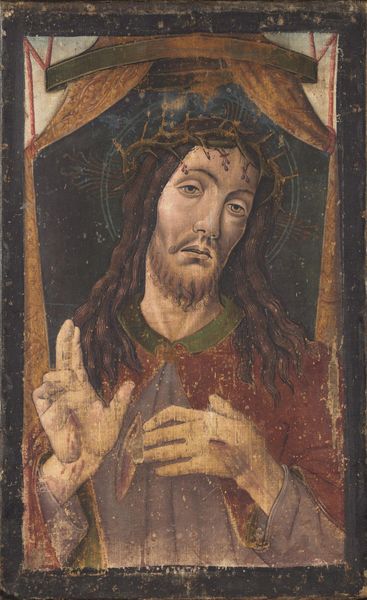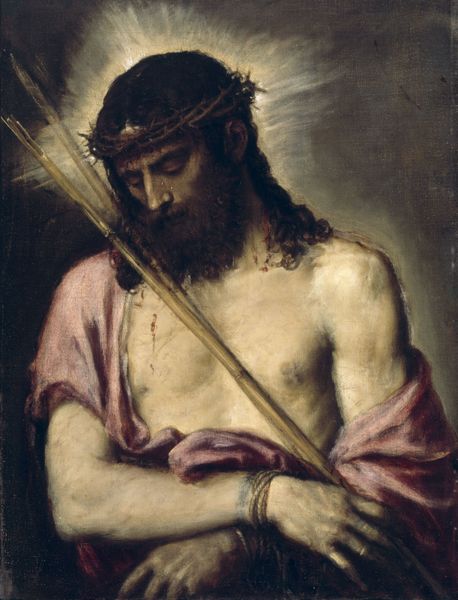
oil-paint
#
portrait
#
baroque
#
oil-paint
#
figuration
#
oil painting
#
history-painting
#
portrait art
Dimensions: support height 64.7 cm, support width 49.4 cm, support thickness 1.1 cm, outer size depth 7.3 cm
Copyright: Rijks Museum: Open Domain
Editor: This is Anthony van Dyck's "Christ as Saviour of the World," created sometime between 1620 and 1630, using oil paint. I’m immediately struck by the realism of the face, especially given the symbolism of the subject. What do you see in this piece, particularly considering the materials and how they contribute to the overall message? Curator: The first thing I see is oil paint, of course. Van Dyck employs it with a delicate touch here, layering pigments to create luminosity. But it’s not just about technique. Oil paint, as a commodity, facilitated the spread of religious imagery to a wider, wealthier audience. We must ask: who was commissioning these images and what social power did that represent? Consider how the cost of pigments alone dictated who could afford such a depiction of Christ. Editor: So the material itself speaks to a specific audience and economic structure? It makes me think about the role of patronage. Curator: Exactly. Baroque art wasn’t created in a vacuum. Think about the labour involved – grinding pigments, preparing the canvas – a whole workshop contributing to a single image intended for private devotion, perhaps, or to signal the owner's piety and status. Do you see a tension there, between the image of Christ and its mode of production? Editor: It’s almost paradoxical. Christ, often associated with humility, depicted with costly materials thanks to wealth accumulation... Curator: And displayed in spaces of power! It asks us to question the institutions that propagate these images. Van Dyck wasn’t just an artist, he was a participant in a system of material exchange and social hierarchy. Editor: I hadn't considered the social context of the paint itself before, which completely alters my perspective of what Van Dyck might be hoping to show. Thanks. Curator: Thinking about the "stuff" of art opens up a whole new dimension, doesn't it? Looking beyond the subject and delving into its production reveals complex economic and social forces at play.
Comments
No comments
Be the first to comment and join the conversation on the ultimate creative platform.

